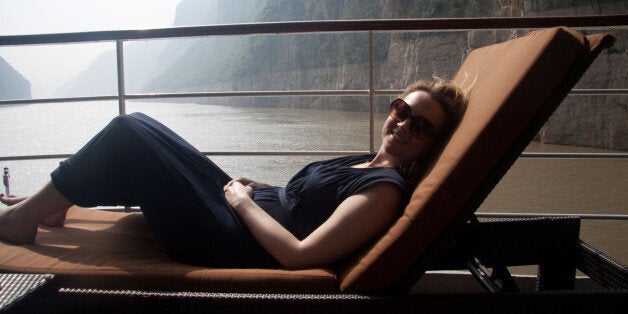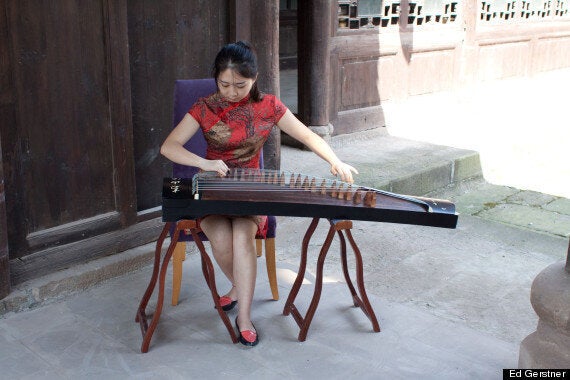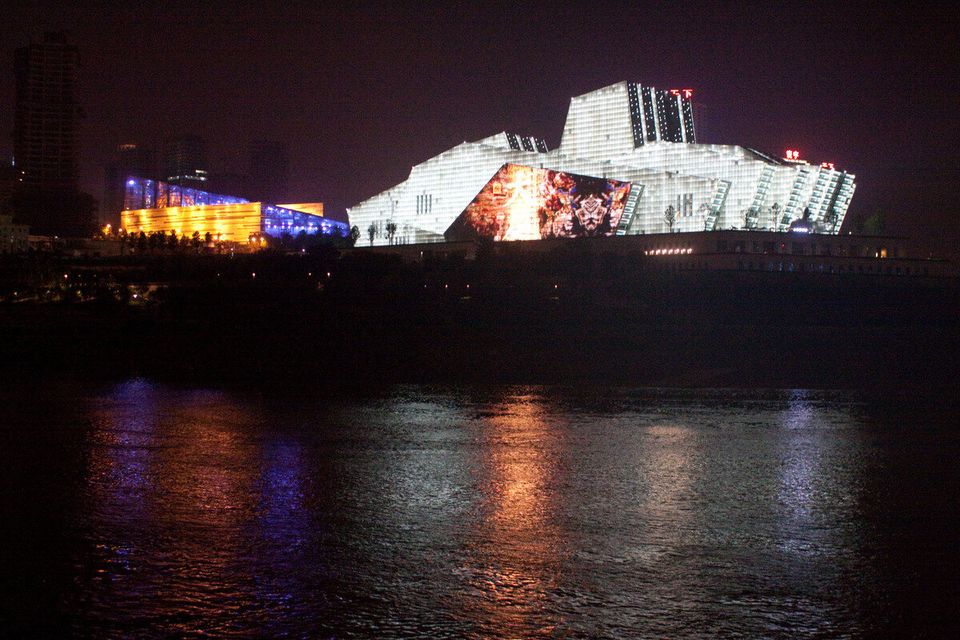
Although China's well documented habit of demolishing major antiquities during the mid 20th century can make traditional tourist excursions a little tricky, there's one snaking path that will never fail to transport curious visitors back to the past.
The Yangtze River, which springs hopefully from the bleak, snowy landscape of the Tibetan Plateau in the east, before surging 3,964 miles across China, to reach Shanghai (a city built on the silt created by the river) and the East China Sea, has no need of a museum curator to make its historical point.
Everything about this river is majestic and symbolic; providing the backdrop for Chinese myths and legends, a landscape of epic beauty and the location for one of the grandest, and most controversial, hydropower projects in modern history -- which was finally connected to China's national grid last year.
In fact, the only problem you might have is knowing when to stop reading about its significance, and start enjoying the natural drama, as the third largest river in the world slides quietly by your ship balcony while you're buried in guidebooks.
When it comes to cruising on the Yangtze, tourists needs to pay for quality. Certain tour operators won't book a basic cruise package offered by companies such as Victoria Cruises, because they know, in advance, that their Western clients won't be impressed.
With half the amount of guests onboard, compared to a traditional ship, Sanctuary Retreats is the only company to offer a genuinely high-level experience. Their English-speaking staff ensure every customer is made to feel at home, and each aspect of your stay, from the cleanliness of your room to your tours, feels carefully orchestrated.

Traditional Chinese zither recital, organised by Sanctuary Retreats
Before boarding our Sanctuary Retreats cruise ship, the Sanctuary Yangzi Explorer, at Chongqing -- the World War II (or rather than Anti-Japanese war) capital of China -- my knowledge of the river was scant.
But within four hours of landing in my beautiful cabin, a screening of a Discovery channel documentary about the 16-year project to build the Three Gorges Dam, which caused the displacement of 1.4 million people, inundation of 1,350 villages and cost 30 billion dollars, had awakened my dozy husband and I to some serious social-political-geological sightseeing.
A typical Yangtze river cruise takes place over four days, travelling east towards Yichang. The journey takes in the famous Three Gorges (iconic valleys between towering mountain peaks), day trips to relocated towns, a peapod boat trip down the Shennong Stream, and a trip through the dam itself.
On board the Sanctuary Yangzi Explorer, guides and talks help to orientate visitors, who are all struggling to make sense of a series of seriously epic historical events related to the Yangtze.
From the battle of The Three Kingdoms from 184-280 (watch Red Cliff, a filmic celebration of men so well versed in the art of war they almost manage to avoid fighting altogether, to get the gist) to an engineering project whose scale has critics worldwide wide-eyed with fright.

Wu Gorge, Yangtze River
Before reaching the Three Gorges, visitors visit the town of Fengdu. Or rather half of it. The other half was submerged by the new reservoir created by the Dam project, to prevent the historic problems of flooding in low-lying villages downstream.
For Western tourists, the visible tension between the country's deep attachment to ancient history, and its desecration of the geographical heart of this civilisation, in order to secure economic and social progress, is completely absorbing.
In the town of Fengdu, which dates back to 206 BCE, we visited a Qing dynasty mansion complex that has been relocated up the river banks, before the Yangtze's water level was raised to a level that submerged 1,208 sites identified as of historical and archaeological importance.
The dark wood framed, single-floor building looks a little lost on the river bank among the swinging cranes, freshly built concrete tower blocks soaring into the blazingly hot sky and newly turned brown earth ready for roads.
Our guide, Mark, had been relocated to the new city across the river, before the village he grew up in was flooded. During the summer, visitors can still see the bare outline of old roads, before the water level is raised to its height during winter, he says.
Scroll down for more pictures of the cruise
His story, like that of all the guides we met during our cruise excursions, focused on the positive aspects of modernity on the relocated millions. Gas, electricity, sanitation, new roads that could cut journey times from days to hours, and educational opportunities, all outweighed the loss of a way of life going back for multiple generations, they insisted.
Looking at the brutal outlines of development on the formerly beautiful river banks, it wasn't always easy to swallow their words.
On the second full day, guests on the cruise wake to a full day's worth of cruising through the Three Gorges. Qutang is famously narrow, just 70 metres wide, Wu is the beautiful one and Xiling the most dangerous, due to hidden boulders and currents (which are completely safe now, of course -- but you've got to tell the tourists something as the hours drift by...)
This is the place of myth: Where you can imagine warriors from the Three Kingdoms fighting for control of China in 220, as they did on along this stretch of river on the Jianghan Plains, and enjoy stories about sailors seeing delusions of pretty ladies that save their ships from peril.
For 200 days of the year, the gorges are shrouded in fog, only adding to their air of impenetrable mystery.

Entrance to Three Gorges Dam
After a sublime day of serene sightseeing, finally reaching The Three Gorges Dam is a little like reaching Mordor. The air temperature drops, the sky turns wet to the touch and opaquely grey, and as your ship enters the first of four locks, the shriek of grinding metal becomes your evening's on-deck entertainment.
The Dam is an idea that's long been batted around for the best part of a century.
According to our guides, the original idea was dreamed up in 1919 by Sun Yat-sen, the founder of the Republic of China. But it wasn't until the economic boom that the communist party could begin his dream of a dam so powerful it could provide energy for everyone.
As it stands, the reservoir created downstream now contributes just 3% of the country's electricity needs. But other benefits include the widening of the river to enable a higher volume of traffic to move up and down the country's most historic transport route, as well as improving navigability and of course, reducing the flood risk.
A third of China's population live along the Yangtze and thousands have died as a result. In 1931, 145,000 died in Wuhan (a city halfway between Chongqing and Shanghai), but in 2013 the same city has begun constructing the 2nd biggest skyscraper in the world. A sure sign of faith in its protective abilities.
On the downside, critics warn of the dangers of waste accumulation caused by the blockade, an increased earthquake rise, associated drought problems, landslides, silt build-up that threatens to run ships aground and a lose of rare wildlife. Plus, there are signs that the flooding problem might not even have been fixed.
Moving down each stage of the lock, takes around an hour. From the ship, every window faces a close-up view of concrete, streaked with green algae and oil.
To take our minds off the nightmarish dungeon outside, guests are invited to a farewell night dinner, when the chef pulls out the stops. We're treated to perfectly judged dishes of braised bean curd with chilli sauce and minced chicken, steamed fish in soya sauce with leeks and stir fried sliced beef with honey bean and water chestnuts. And Even the tourists who have steadfastly refused all offerings of Chinese food until this point, half nod their approval.
The final morning could either be spent enjoying a lie in or visiting the local Three Gorges Museum. But, to be honest, my advice is not to leave the boat, as you'll have learned everything you could ever want to know, by this point, who wants to miss a second of cruise time (even if you're stationary?)
